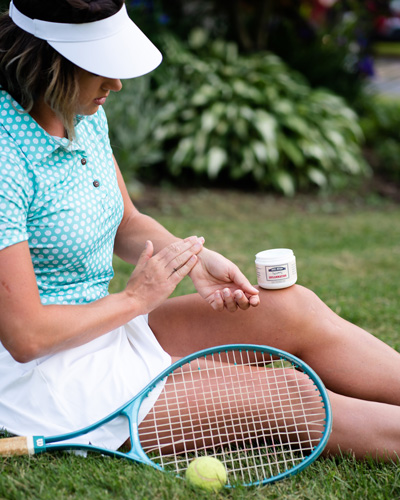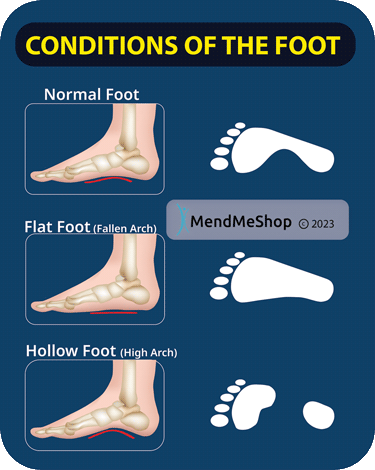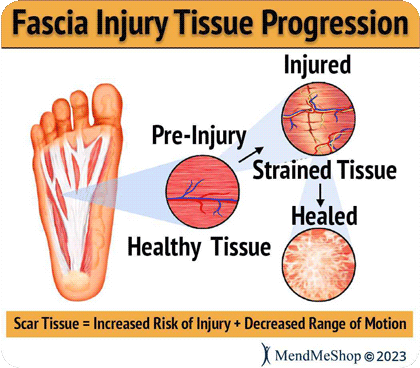Broken Toe
A broken bone is usually a very painful experience. Regardless of what bone is broken - even if seemingly minor - you should get to a physician and have it checked.
Common Causes of a Broken Toe
There are a myriad of ways to break a toe. Having said that, these are the most common causes of toe breaks:
- A broken toe may be caused by trauma such as a fall.
- A broken toe may be caused by wearing shoes that are too tight.
- Construction work without adequate toe protection.
- A broken toe can often occur when you stub your toe against something hard while walking or running.
- A broken toe may happen if you step on your own foot (as sometimes happens in sports such as basketball). A broken toe may be caused by trying to take off socks or shoes that are too small for your feet and toes.
- A broken toe may happen if someone stepped on your foot with their full weight behind them (not uncommon in team sports ie. volleyball, soccer, football).
The most common cause of a broken toe is accidental trauma - either by dropping something heavy on your toe or stubbing your toe. Both of these causes often occur due to poor shoe choices. When carrying heavy items, be sure to wear shoes with adequate toe protection. The frequency of toe stubs can be minimized by choosing proper fitting shoes with adequate toe protection as well - expecially when you are walking in areas with a high risk to toe stubs (ie. in the forest where big roots/rocks lie or perhaps even when working in a marina or around boats).
Depending on the severity of the break, your doctor may advise taping of the broken toe to a neighboring toe for support. A cast may be needed if the break is significant or complicated.
Symptoms of a Broken Toe, or What Does a Broken Toe Feel Like?
Pain
If you have broken your toe, you will likely experience substantial pain in and around the area of the broken bone.
Inflammation / Swelling & Bruising
A recent toe break will almost certainly show indications of swelling - sometimes a LOT of swelling!. It would not be uncommon to see a change in color of the toe due to bruising; bruising occurs when blood leaks out from blood vessels into surrounding tissues. Some bruising would be expected due to a bone break but there are cases where bruising can be dangerous - especially if it doesn't stop (a very good reason to visit your physician after breaking any bone).
If there is an open wound surrounding the break, there will be risk from infection so take precautions to keep the wound clean and covered. As mentioned in our osteoarthritis page, any break or significant injury increases the risk of osteoarthritis (in the future) and the likelihood of this is increased further if the break occurs in and around the joint.

Broken Toe Treatment
To treat a broken toe, the following conservative treatment options are recommended:
- Apply ice to the injured area. Ice can help reduce swelling and pain by reducing blood flow to the affected area. To do this, place an ice pack on your toe directly or use a towel wrapped in plastic to keep it cold while you're resting (keep in the freezer). If you don't have access to an ice pack or towel, simply fill up a bowl with water and freeze it overnight before using.
- Keep the injured foot elevated above heart level as much as possible for at least 24 hours after getting hurt (this keeps pressure off of your broken bone fragments as they heal together over time.
- Avoid putting weight on your injured foot for at least 24 hours.
When to use a TShellz Wrap®:
- After swelling and inflammation are reduced.
- BEFORE getting out of bed in the morning. BEFORE going to bed at night.
- BEFORE exercise, workouts or activity of any kind to warm up the foot and increase length & elasticity of muscles, ligaments & tendons at the base of the foot. Increased elasticity and length of soft tissue is intended to help reduce risk of of re-injury.
- AFTER surgery (once the skin wound has healed over and your physician approves) to boost blood circulation, helping surgically repaired tissues rebuild for long-term health and minimize scar tissue growth at the surgery location.
- Anytime BEFORE you feel you might undertake activity that will put significant strain on your foot.
- Any other situation where you need to increase blood flow to soft tissue in the foot to relax the area, relieve pain / spasms, prevent re-injury and enhance flexibility of tissue in the treatment area.
When to use a Cold Compress or Ice Pack:
- 24 to 72 hours after your initial injury or when you first notice pain and swelling to stop further damage to tissue, relieve pain, and decrease swelling.
- After exercise, workouts or activity of any kind to prevent re-injury.
- Before and after surgery during rehabilitation to control pain and swelling for both pre-surgery and post-surgery.
- Anytime you feel that soft tissue (muscles in particular) has been over-extended, over-worked, twisted, strained or sprained causing pain and swelling.
- Anytime you have swelling, sharp throbbing pain or inflammation.
- Any other situation where you need to draw the pain and inflammation out of the area.

MendMeShop Arnica Infusion Pain Relief Cream
Broken Toe Pain Keeping You Awake?
Pain Got You On Edge?
Temporary Relief from Serious Pain For People Who Are Serious About It!

MendMeShop Sesamoid TShellz Wrap®
This wrap is designed to:
- increase extensibility & flexibility of metatarsals/sesamoid/toe areas during treatment & for a short while after
- increase blood flow in the application area
- treat the TOP, BOTTOM or SIDE of the foot
What Kind of Foot Do You Have?
It's easy to find out! Find some cardboard, dip your foot in water, and have fun making a 'foot print'. This is a simple and easy way of analyzing how much of your foot makes contact with the floor. Orthopedic insoles or Orthotic shoes are often recommended to ensure a more optimal walking technique and to support the feet appropriately if you suffer from hollow foot or flat footedness.
Normal Foot / Arch Position
If approximately 'half of your foot' stays in contact with the ground when you are walking, you have what is described as a 'normal' arch. The arch of your foot supports your body during ALL your daily activities.
Flat Foot / Low Arch Position
This describes a foot with a low arch, or even no arch. If someone has a flat foot, they can be prone to internal rotation of the foot, which can in turn lead to other problems in the body. Flat Footedness can occur over time, as the body experiences wear or tear but can also occur as a result of an underdeveloped arch during childhood. Needless to say it is a very common phenomenon.
Hollow Foot / High Arch Position
If the arch of the foot is too aggressively pronounced you may be diagnosed with Hollow Foot. This condition can cause instability during any kind of movement. High arches are much less common than having a flat feet and can arise due to issues with the nerves or bones.

Scar Tissue & Fibrotic Adhesions
All connective tissue is living tissue; tissue requires a blood supply and is continually in a state of regeneration. Any and all connective tissue has the potential for injury and inflammation. Injuries can be small such as in the case of a strain, or injuries can be large tears or even avulsions (complete tearing). Once an injury is experienced, the area will experience both inflammation and the growth of scar tissue (otherwise known as adhesions).
The occurrence of scar tissue is a regular part of life. Scar tissue forms as part of the progression after injury occurs. Scar tissue essentially 'fills in the gaps' after a cut, tear or wound presents itself in the body. Scar tissue is composed of the protein, collagen; it is widely known in the medical community that scar tissue is weaker and less flexible than original tissue.
- Normal/original connective tissue is made up of collagen, but this collagen is aligned in a specific direction with each strand in alignment. This results in the connective tissue having a strong tensile strength while also having excellent flexibility and extensibility.
- Scar tissue is made up of a 'criss cross/ random' formation of collagen and attaches to everything in the area. You can likely imagine the result of a patch of scar tissue; the effect is similar to pouring extremely sticky glue in your hair. It interrupts everything and is disruptive to the function of the connective tissue. The caveat is that the scar tissue does its job - it binds tears together. You definitely want the tear to heal, but it is important to ensure the scar tissue goes away despite the fact that it does not go away easily.
- After scar tissue forms, although the wound or cut is now closed (and less prone to infection), the area of tissue itself is inferior in functionality to what it replaced.
Continuous re-injury and build-up of scar tissue makes it more likely that you will wind up with chronic pain, reduced Range of Motion or even arthritis (permanent damage).
Heal Quickly to Minimize Scar Tissue Growth & Reduce Re-Injury Risk

For tissue injuries, it is important to heal quickly and completely; this will help minimize the build up of scar tissue. If you don't, your tissue injury may be the start of a long term chronic injury resulting in a loss of Range of Motion and joint atrophy.
The human body will use scar tissue as a temporary solution and will try to build the scar tissue as fast as possible to heal tears in soft tissue (muscles, tendons). Scar tissue can form fast to bring together the edges of a tear, but working fast doesn't mean that the job's done right. When scar tissue forms it doesn't come together as neatly as regular (healthy) tendon/ligament tissue would. Scar tissue fibers will lay down over top of your tear in a cluttered, messy and jumbled up way.
This is how scar tissue works - it is messy and inelastic. The scar tissue that forms in your soft tissue will be unorganized and won't line up properly with the healthy tissue surrounding the tear. This scar tissue will attach to everything in and around the tear including the surrounding healthy tissue as well. This results in a long-term fusing together of everything the scar tissue touches, reducing your ability to move and making the injury even more painful!
The longer a soft tissue injury remains, the more scar tissue is likely to build up in and around the injury location. This is why it is critical to treat your injury quickly without delay. Continuous re-injury and build-up of scar tissue while staying active or going back to work means you will experience a greater risk of winding up with on-going, chronic foot pain and overcompensation injuries to the hips, knee(s), and or back.
FREE SHIPPING ON ALL PRODUCTS CURRENTLY ENABLED
Product specialists are available 9:00 am to 5:00 pm Eastern Standard Time Monday to Friday.
If any question or concern arises, call us or simply send us an email at any time (we check our emails constantly all throughout the day and night.. even on holidays!). We will respond as soon as possible.
North America Toll Free 1-866-237-9608
Outside North America +1-705-532-1671
Please be aware that this information is neither intended nor implied to be a substitute for professional medical advice. All testimonials and comments reflect the real life experiences of individuals that used our products, however, individual results may vary. Always seek the advice of your physician or other qualified health provider before using any of our outstanding products to make sure they are right for you and your condition or if you have any questions regarding a medical condition.
For more information, call us via: 1-866-237-9608 or send us an email. View our Privacy Policy.
The terms Inferno Wrap®, Freezie Wrap®, T-Shellz® and Mendmeshop.com® are registered trademarks of In.Genu Design Group Inc.
All images shown are exclusive Copyright© 2006 - 2025 AidMyPlantar.com.